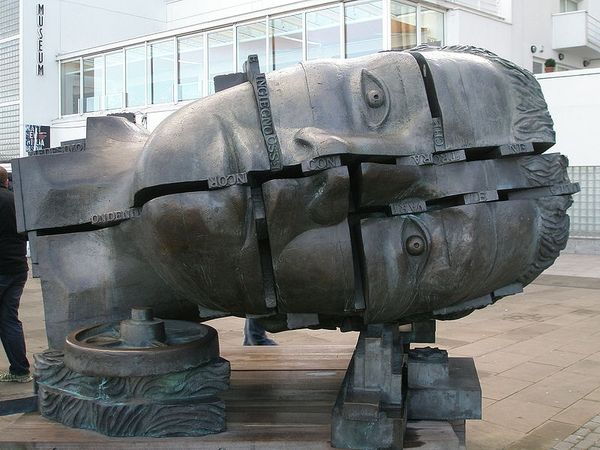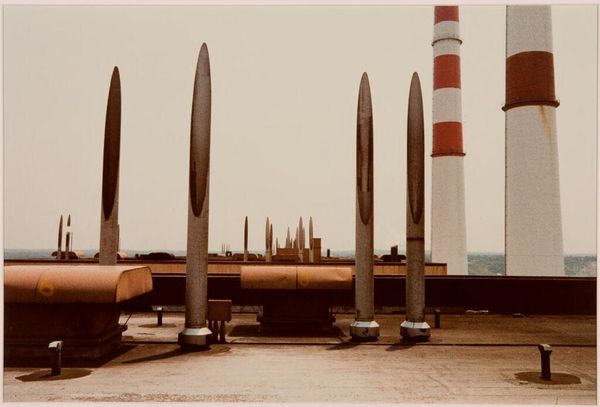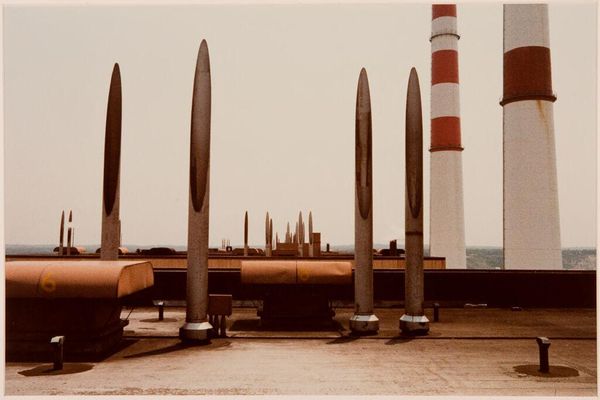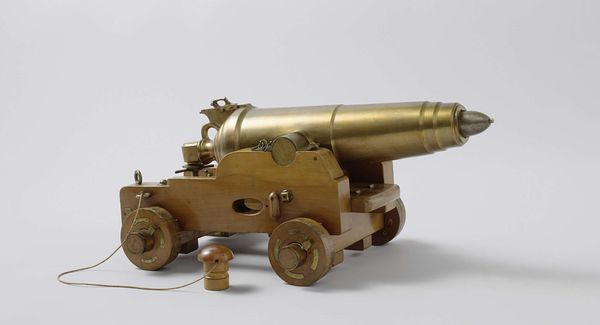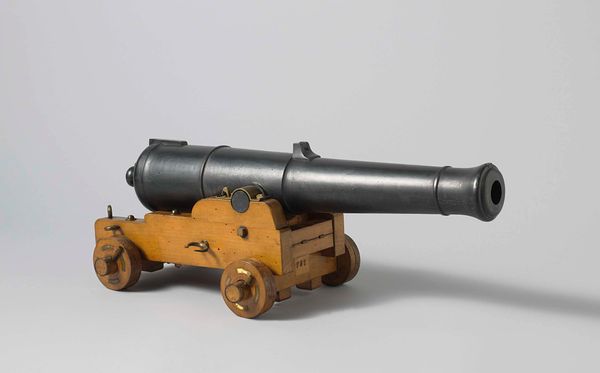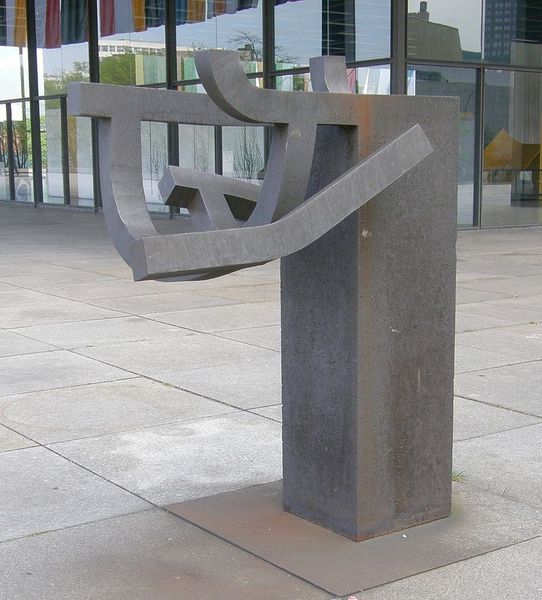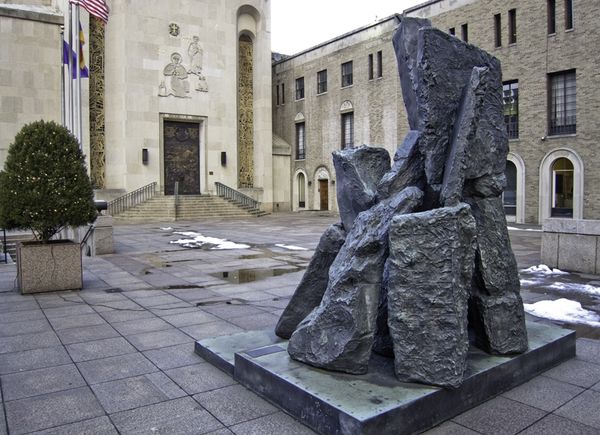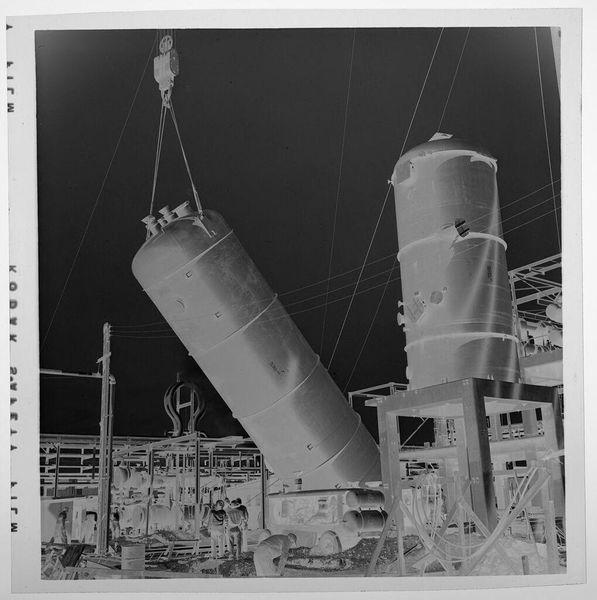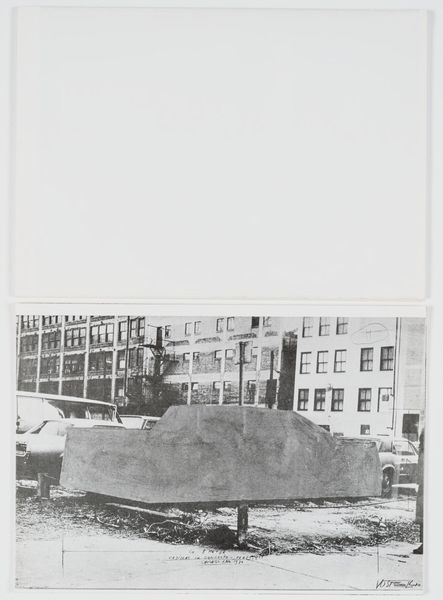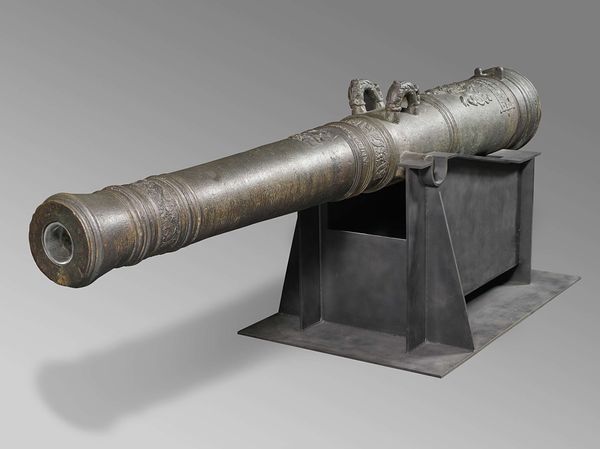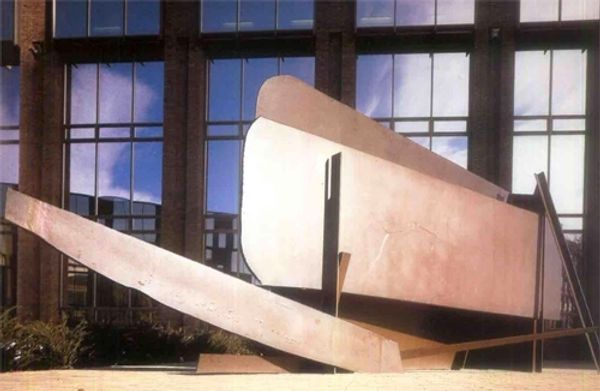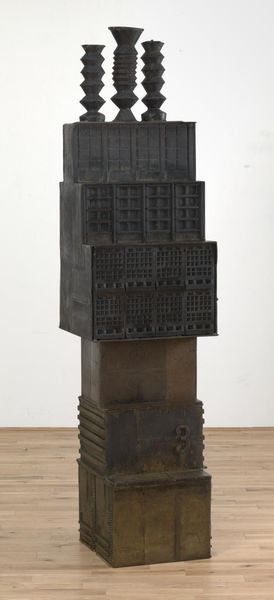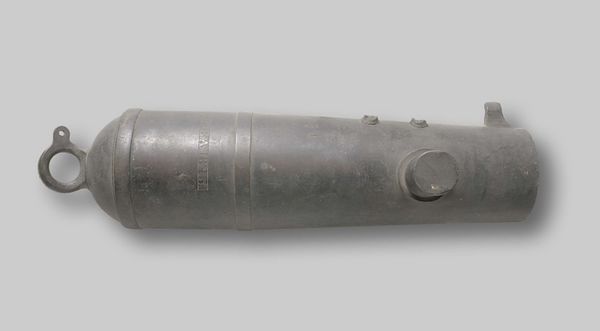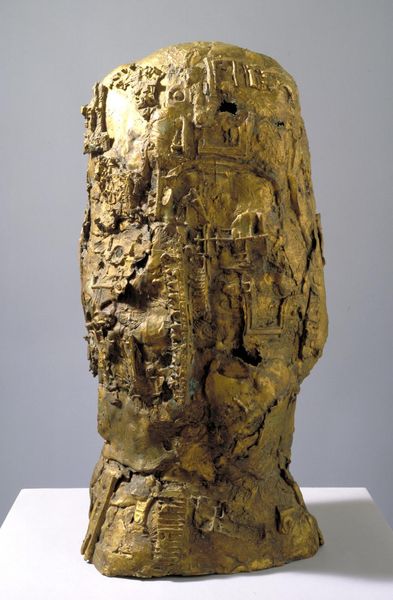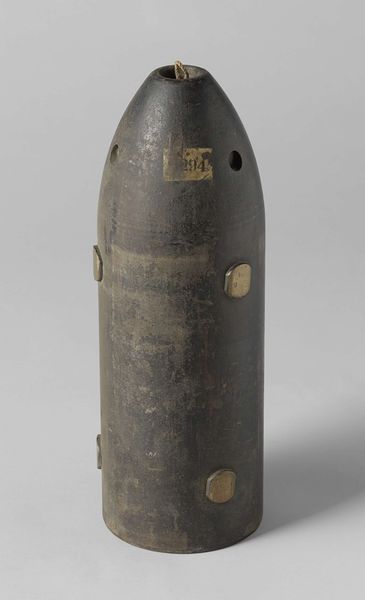
Lipstick (Ascending) on Caterpillar Tracks 1969
0:00
0:00
claesoldenburg
Yale University Art Gallery (Yale University), New Haven, CT, US
assemblage, metal, public-art, sculpture, site-specific
#
public art
#
conceptual-art
#
assemblage
#
metal
#
public-art
#
geometric
#
sculpture
#
urban art
#
site-specific
#
pop-art
Copyright: Claes Oldenburg,Fair Use
Curator: This striking public sculpture, created in 1969 by Claes Oldenburg, is titled "Lipstick (Ascending) on Caterpillar Tracks." It's a powerful assemblage of metal components that’s situated right here at Yale University. What are your first thoughts? Editor: Starkly confrontational. The sheer size of the lipstick atop the militaristic base is jarring, an unexpected, perhaps even ironic, coupling. There’s a certain aggression about its presence. Curator: Absolutely. And its initial construction actually reflects the political climate. The original inflatable lipstick was erected as a protest against the Vietnam War. Considering the ready availability of military surplus material and parts at the time, can you consider the symbolic implications of using military items? Editor: I see the choice of materials for their inherent symbolic qualities. Lipstick, historically tied to feminine beauty ideals and the cosmetic industry, contrasted sharply with the caterpillar tracks suggesting masculine aggression, violence, and war. The materials, then, become powerful signifiers within a broader sociopolitical commentary. How subversive! Curator: It definitely disrupts traditional artistic hierarchies. By using mass-produced items and industrial materials like metal, Oldenburg questions notions of artistic skill and labor. The act of combining these readily available components elevates them to a new level of discourse, forcing us to consider their relationship. Editor: And placement is critical, too. Displayed on a university campus—a supposed haven for intellectual pursuit— the artwork challenges institutions of power and encourages questioning dominant ideologies. It merges these conversations on gender, war, consumption, and academia. Curator: Precisely. The "Lipstick," initially a symbol of protest, permanently installed on the Yale campus challenges ongoing issues of representation, labor, and warfare. The material construction amplifies its voice as a visual manifesto, prompting us to re-evaluate both beauty and destruction. Editor: It’s still generating powerful statements, and now, reflecting on its legacy and context, I'm appreciating the intersections of material, meaning, and political dialogue so inherent in its assembly. Curator: Agreed, a vital piece that still demands examination, questioning both itself, its materials, and ultimately our understanding.
Comments
No comments
Be the first to comment and join the conversation on the ultimate creative platform.
